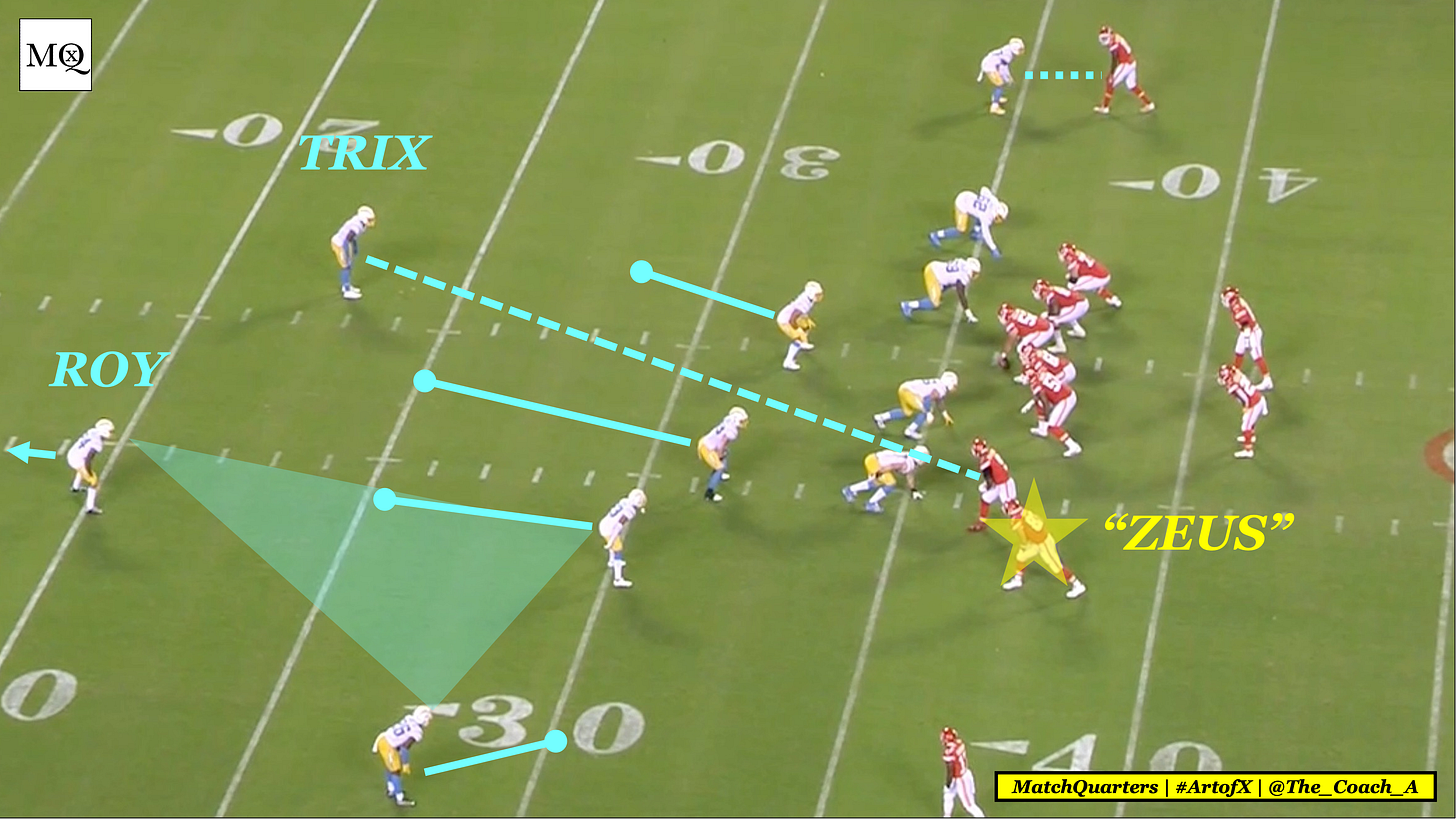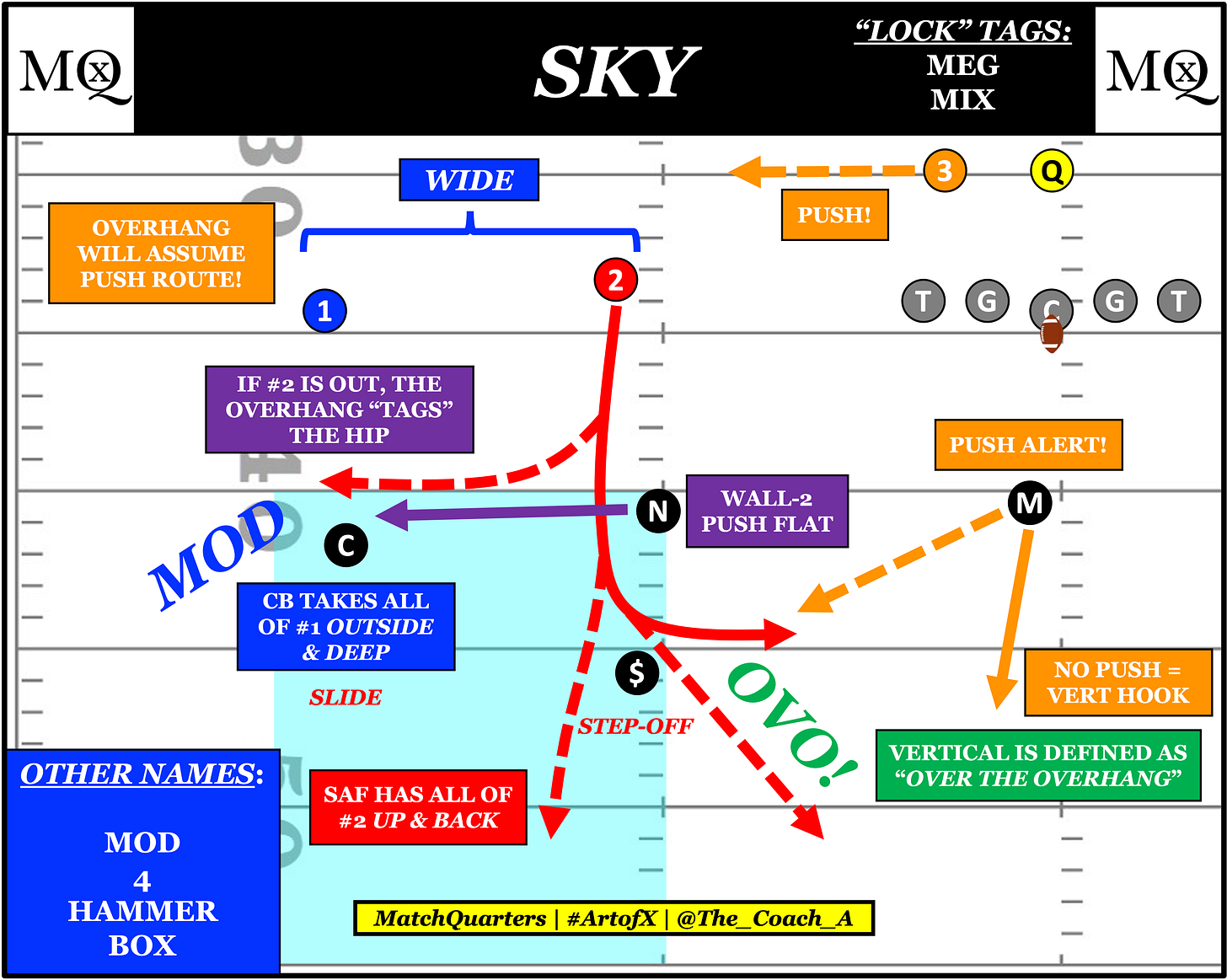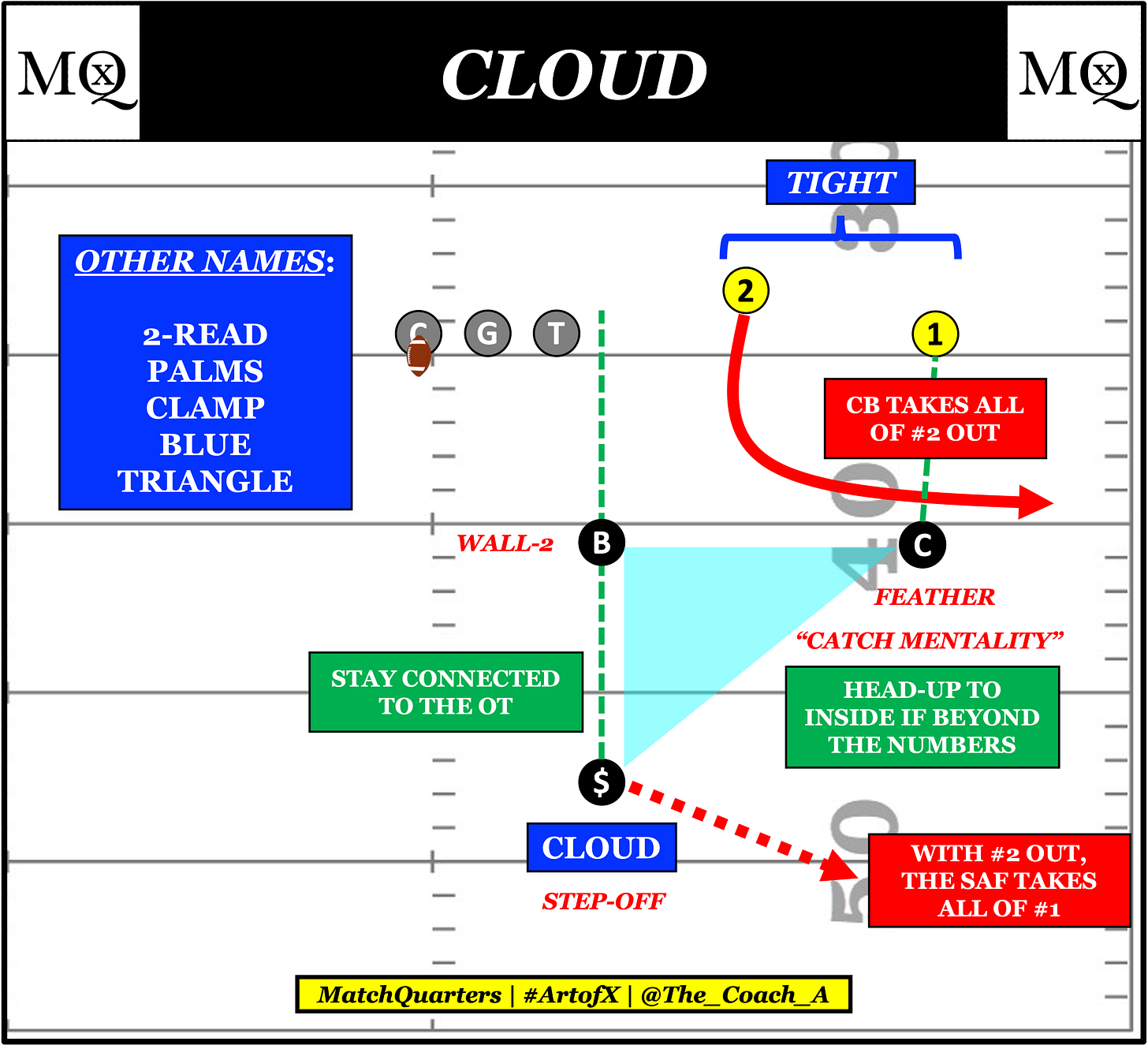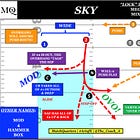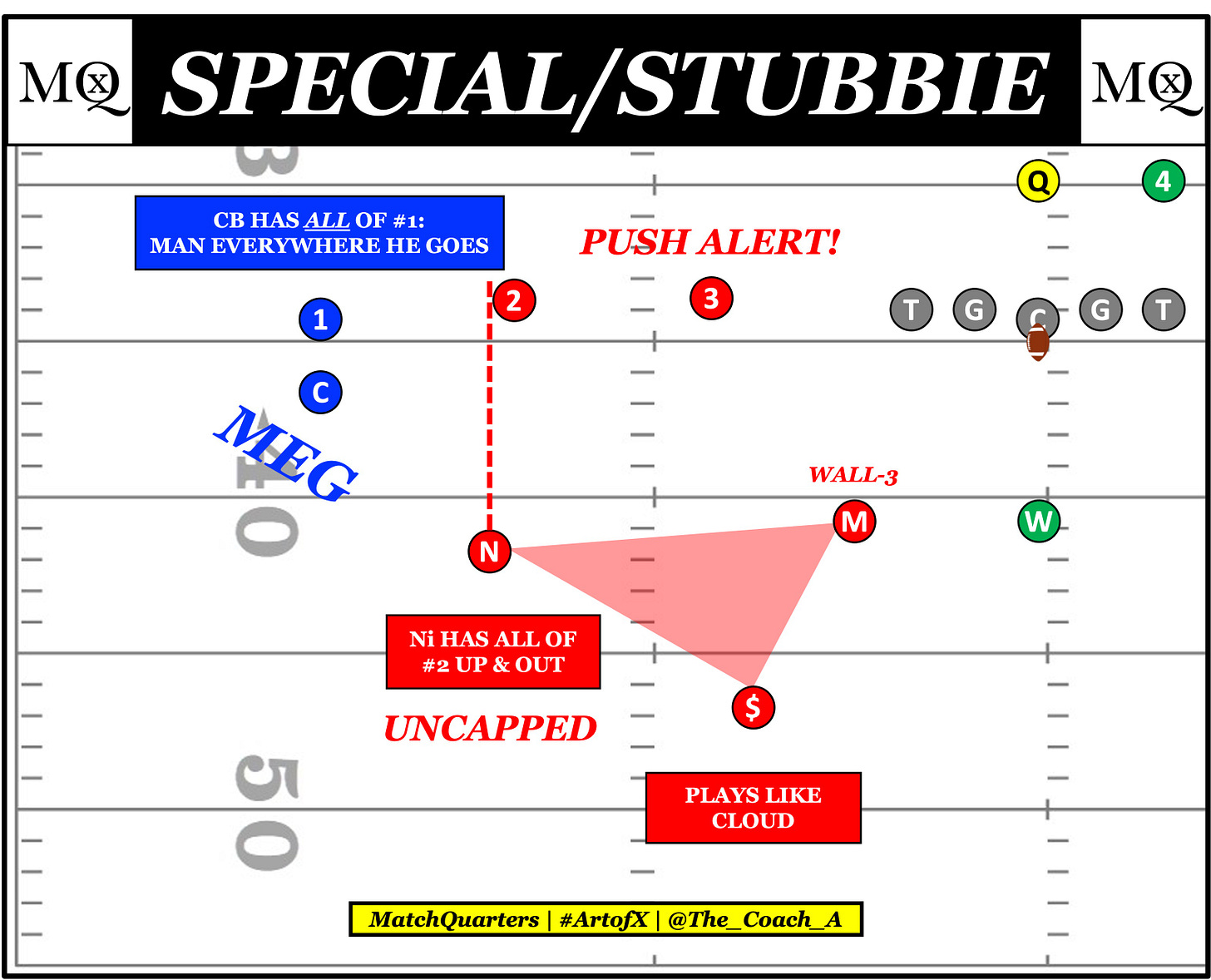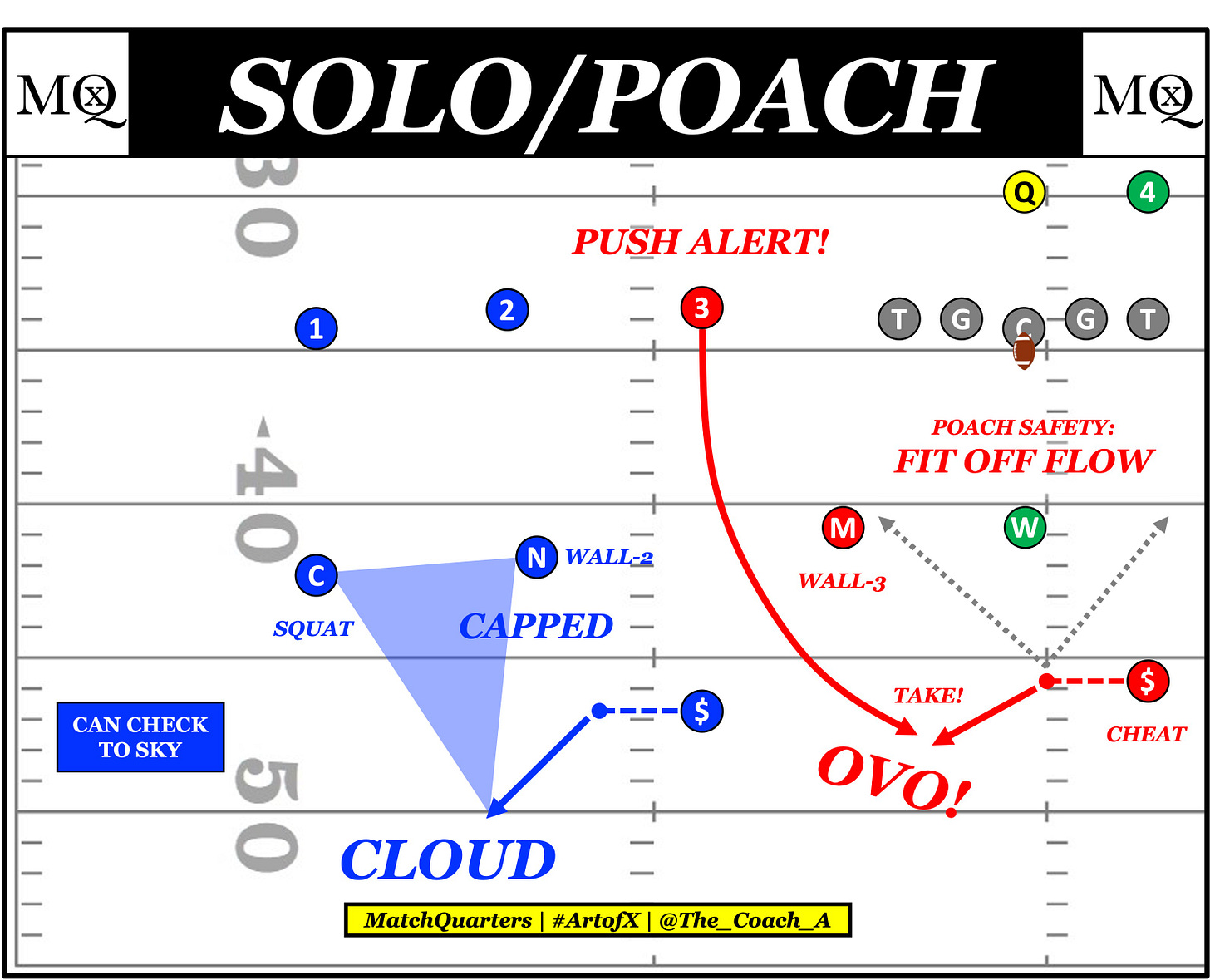Explaining Fangio's Sub "Zeus" Tag
The NFL is becoming an increasingly two-high ecosystem. MatchQuarters details one of the unique ways the Fangio system layers its coverage to the best WR.
Statistically, the Fangio system coaches are Cover 3 dominant. For analytics companies attempting to decipher coverages, getting a “real” number can be difficult because of how the scheme teaches “rotations.” The weak rotation of the Fangio defense lends itself to meshing Cover 3 with split-field coverages, primarily the systems’ Cover 8 or Quarter-Quarter-Half. I will examine how Cover 8 (QQH) functions in this article and detail how Fangio targets a stud WR (Zeus). Once detailed, the layering system within the coverage becomes clearer.
Cover 8 in the Fangio system is mainly known as Cover 6 (4+2 = 6). In the Saban system, “6” refers to weak rotation Cover 3. “Stuff” is the term used when Fangio wants to run Quarters to the Ni side and Cover 2 away (traditional Cover 6). Mainly, the system uses Cover 8 to run split-field coverages. The concept puts the Cover 2 side to the Ni and the Quarters side away. Doing this meshes weak rotation Cover 3 with the split-field coverage toolbox.
One reason why this system, in particular, is gaining popularity is that it is so hard to decipher with the naked eye. For QBs with EDGEs barreling down on them, it is even harder to process the actual coverage concept. The muddying of the waters leads to hesitation, which can spell disaster in the NFL. With so many offenses using change-of-strength, quick motions, and play-action on early downs, running a split-field system has tremendous benefits.
The essence of the split-field concepts in Cover 8 and Stuff come from Quarters and Cover 2. Above is a diagram of Quarters coverage. There are several ways to play it, from spot-drop “country” Cover 4 to multiple man-match concepts in the Saban system (Cover 7). The Chargers’ Brandon Staley has found a way to mesh the Saban man-match schemes with Fangio’s basic rotation principles. Most common in the NFL is a zone-match concept where the Ni and Safety work in tandem to play the Slot, similar to what I have illustrated above.
In the Fangio system, the Ni has what is referred to as a “Quarter Flat” technique. Sky, or Quarters, creates a “box” over the WRs. The CB and Safety are responsible for “capping” any vertical routes, while the Ni and Mike (if #3 is present) maintain the intermediate zones. The Ni carries the vertical of #2 and will push to the flat if any WR attacks that area. If the system wants to play Quarters to both sides, it will tag the call with “Quads.”
Cover 2 also has multiple ways of being played, from aggressive (Trap) to more passive (Cloud) concepts. Most are familiar with Palms, or 2-Read, at the lower levels of play. In those concepts, the CB will buy any route to the flat, nailing down on it immediately. The Safety will then climb to the vertical of #1, buying his route. The overhang is a “Wall-2” player and will not push to the flat unless #3 is to his side.
In the most basic Cover 2 concepts, the CB will assume any route to the flat while the overhang climbs with the #2 WR. The defense essentially creates a triangle, as illustrated in the diagram above. In the Fangio system, there are several ways to play the Cover 2 side, Smash or Squat. In Smash, the CB is playing from an inside alignment and aggressively re-routing #1 until someone threatens his flat. In Squat, the CB is re-routing #1 from an outside alignment. In Stuff and Cover 8, the base technique is Squat. A “Patty” call can be made to a single WR to tell the LB he is responsible for the RB to the flat.
Outside of the NFL, the most popular split-field Trips coverage is most likely Special/Stubbie (Stubbie is a Saban term). In Special, the CB to the Trips side will “lock” on #1 and take him everywhere he goes (MEG). The Ni, Safety, and LB will play a Cloud concept (triangle) over the other two WRs. The concept creates a bracket on the #2 WR while supporting the LB on #3.
If defenses want to keep their split-field shell concepts (Sky/Cloud) intact, they can run what I call Solo, or Poach, to the Trips side. In Solo, the backside Safety is responsible for the vertical of #3 while the CB, Ni, and frontside Safety play Sky or Cloud over the two outside WRs. One of the main drawbacks of this coverage is that the backside CB is “locked” on the single WR (MEG).
Related Content: Match Quarters - A Modern Guide to Split-Field Coverage
A powerful platform used on Microsoft® Visio & PowerPoint to allow football coaches to organize, format, and export Playbooks, Scout Cards, and Presentations efficiently.
Keep reading with a 7-day free trial
Subscribe to MatchQuarters by Cody Alexander to keep reading this post and get 7 days of free access to the full post archives.



